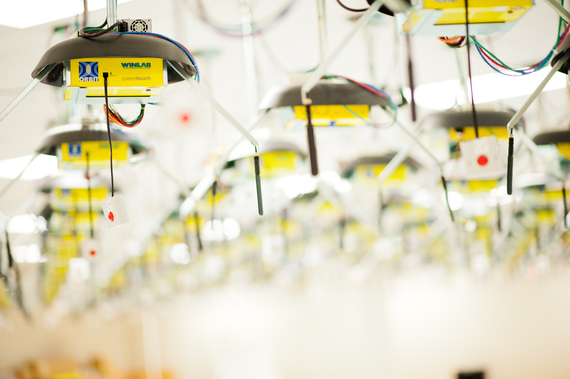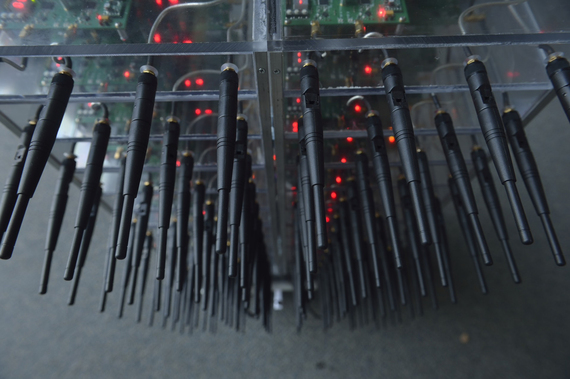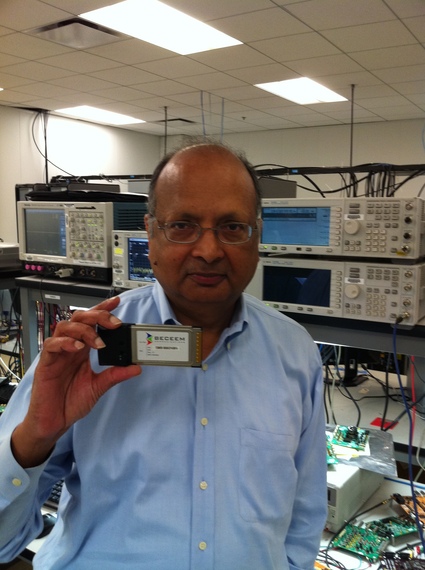The ability to communicate through the air without wires was first discovered in light-based form in 1880 by Alexander Graham Bell, and via electromagnetic radio waves by Heinrich Hertz in the late 1880s.
Over the last century and a half, wireless communication has continued to evolve, enabling mobile phones, widespread sensors, global positioning systems and the development of a digitally-connected world.
Though independent inventors made early strides in the field, in more recent times it was a combination of academic and industry researchers who enabled the innovations that have transformed our world.
Last week, the National Science Foundation (NSF) -- the independent federal agency that promotes the progress of science -- announced the latest effort to spur new innovations: the Advanced Wireless Research Initiative, a public-private partnerships that commits more than $400 million over seven years to support the research and infrastructure needed to create wireless communication systems far faster, smarter and more responsive than today's.
This is far from NSF's first foray into wireless research. From fundamental mathematics to engineered devices to leading telecommunications companies, NSF support for fundamental wireless communication research led to the advances that enabled 3G, 4G, LTE and Wi-Fi and helped make the wireless world what it is today.
Here are six pivotal advances in wireless communications enabled by NSF:
Nurturing an industry leader
In 1987, Andrew Viterbi, the co-founder of Qualcomm, Inc., received the first of two NSF Small Business Innovation Research (SBIR) awards to advance Code Division Multiple Access (CDMA), a technology used in wireless communication throughout the world.
CDMA allows multiple users to communicate with cell phones, satellites and radios on the same physical channel through the sharing of bandwidth.
The award -- granted two years after Qualcomm was founded and at a time when the company had only 35 employees -- was a major step in Qualcomm's growth, and in the wireless industry's eventual acceptance of digital CDMA technology as the commercial standard for cellular telephones.
Qualcomm now has more than 33,000 employees in 224 locations worldwide and generated $25 billion in revenue in 2015. The company remains one of the industry leaders in wireless network development.
The birth of the spectrum auction
As wireless communication blossomed in the early 1990s, the Federal Communications Commission (FCC) received an increase in requests to use the limited commercial frequencies of the electromagnetic spectrum. The upsurge rendered the FCC's lottery-based licensing method inadequate, but economists Paul Milgrom and Robert Wilson of Stanford University together with collaborator Preston McAfee had a solution: an auction system based on their research in game theory and experimental economics.
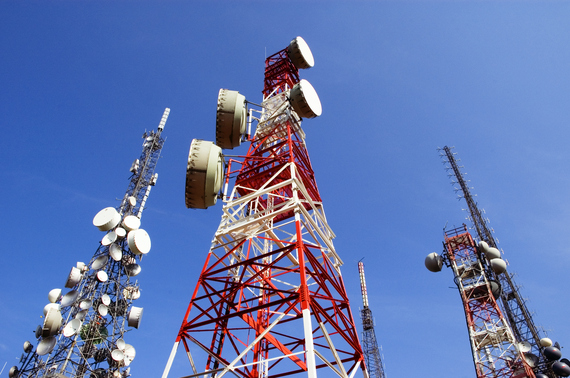
Since their inception in 1994, FCC "spectrum auctions" have netted over $120 billion in revenue for the federal government.
The team's NSF-funded studies had already documented conditions under which the proposed spectrum auction was expected to perform well, and experiments in NSF-supported labs run during the FCC's decision-making process provided additional evidence that the new system surpassed the proposed alternatives.
The U.S. system of partitioning airwaves is now emulated in several other countries around the world. Since their inception in 1994, FCC "spectrum auctions" have netted over $120 billion in revenue for the federal government.
Pioneering Wi-Fi
With NSF support, Chris Heegard of Cornell University pioneered forward error correction, in which a transmitter sends redundant data and the receiver recognizes only the portion of the data that contains no apparent errors. The technology is vital in high-speed wireless networking, cable modems and digital television.
In 1997, Heegard founded Alantro, a Santa Rosa-based startup that ultimately developed the underlying technology for Wi-Fi, an all-pervasive mode of high-speed wireless networking that is used by millions of people worldwide. Alantro was acquired by Texas Instruments in 2000 for $300 million in stock, helping to make wireless Internet access widely available.
Boosting wireless capacity
Arogyaswami Paulraj of Stanford University was supported by NSF to perform the fundamental research that developed the electronics and smart antenna technology essential to Multiple Input Multiple Output (MIMO).
MIMO is a method for multiplying the capacity of a radio link by using multiple transmit and receive antennas to allow radio signals to reach a receiving antenna by two or more paths.
MIMO increases wireless capacity by a factor of eight in current systems, but is expected to increase capacity by more than 100 in coming years.
In 1999, Paulraj founded Iospan Wireless, Inc - the first company to incorporate MIMO technology in a commercial system. Iospan was acquired in by Intel Corporation in 2003. In 2004, Paulraj co-founded Beceem Communications, Inc., which became the market leader in 4G-WiMAX semiconductors and was acquired by Broadcom Corp. in 2010.
The economic and societal impact of Paulraj's foundational work has been enormous: MIMO is the de facto requirement in every current wireless standard, whether LTE, Wi-Fi or beyond.
Improve communication security and tracking capabilities
Ultra-wideband (UWB) is a radio technology pioneered by Robert A. Scholtz from the University of Southern California with NSF support. This technology can transmit short-range, high-bandwidth communications over a large portion of the radio spectrum using very low energy pulses.
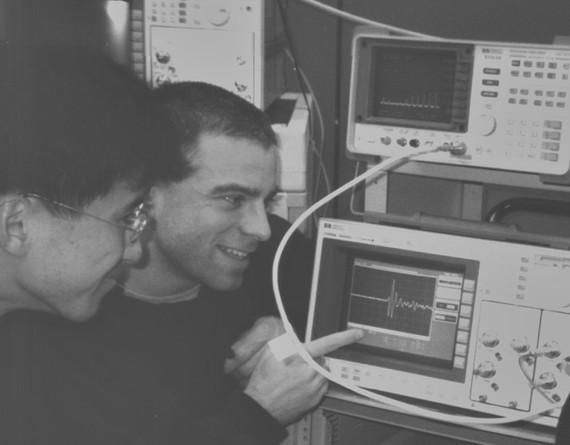
Students Joon Yong Lee and Jean-Marc Cramer observing properties of a UWB signal on NSF-purchased equipment.
UWB communications have traditionally been used in defense applications like radar imaging. But more recently UWB has been applied to sensor data collection, precision location applications and high-speed local area and wide area networks.
UWB transmits simultaneously over many parts of the radio spectrum that may be used by other narrowband radio systems, but with so little energy within each narrow band that UWB signals tend to not interfere with their operation. One advantage is UWB's ability to achieve data rates of more than 1 gigabit-per-second.
Scholtz is also recognized for his contributions to spread-spectrum techniques in which a signal generated with a particular bandwidth is deliberately spread in the frequency domain, resulting in a signal with a wider bandwidth. This results in improvements in security, as resistance to natural interference, noise and jamming is increased and detection prevention improved.
New spectrum frontiers
Millimeter-length waves (mmWave) operate in the band of radio frequencies in the electromagnetic spectrum from 30 to 300 gigahertz (GHz). In the past, they have commonly been used in space communications, radio astronomy and remote sensing -- but not in telecommunications because they are prone to deterioration in crowded settings.
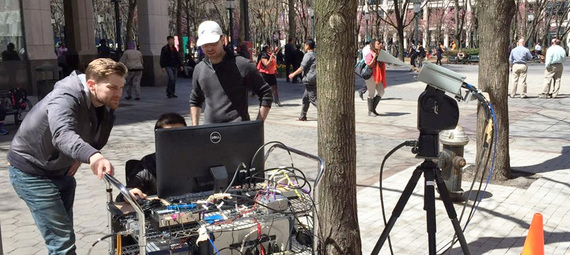
To speed the development of 5G, NYU WIRELESS researchers are making key software free and open to all.
Recent NSF-supported research by Theodore (Ted) S. Rappaport, founding director of NYU WIRELESS, showed that mmWave can be made to travel long distances and can also transmit effectively in cities and other crowded locations.
Rappaport and his colleagues have made all of their mmWave data measurement and channel simulator software open source, accelerating developments in this promising area of wireless research.
------------
[Images courtesy of NYU-Poly/Marian Goldman, WINLAB Rutgers University, Jeff Fitlow/Rice University, Richard Scholtz, Arogyaswami Paulraj, and Wikimedia Commons]
